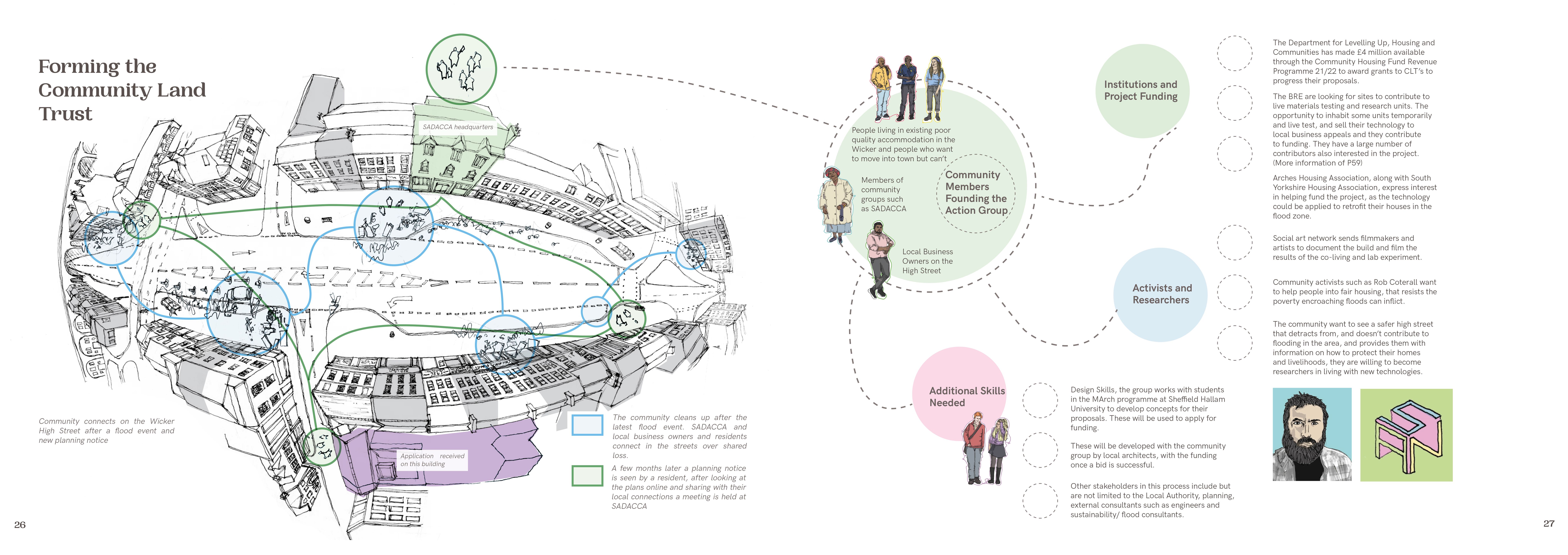The floods over the last decade in Sheffield have been some of the worst floods in living memory for the city. February 2020 was the wettest month on record, with thousands of homes flooded particularly in the Scottish Borders and Yorkshire, more than 50,000 properties, including two key hospitals, were left without mains power. This problem is not going away. My project aims to partner with the BRE Trust, that was set up in 2002 and is the largest UK charity dedicated to research and education in the built environment.
The trust has been investing in essential flood research and has established the well known, ‘flood resilience project’. This project aims to enable greater uptake of low cost and money saving flood resilient repair approaches by home and business owners. Their key output so far has been the retrofit of an existing Victorian terrace building, and they are actively seeking future partners. My project aims to act as a ‘next step’ in this flood resilience programme, by providing an outreach centre in a flood susceptible area, where a co-housing group have reached out to them as they are willing to test living with these technologies, designing the building around existing tech and upgrade the building as new technology is developed.
The Lab element of the building will also feature a space where researchers can live for 6-24 months as they develop work and use the lab as a live work space, families from the Wicker can live in flood resilient homes permanently and the researchers can put on live testing evenings where they test and discuss technologies with the landlords, business owners and residents who have properties at risk of flooding in the locality. There lab will therefore become not just a place for testing flood resistant technology, but also testing the barriers for implementation with locals through conversation, and residents through their reporting on how easy or difficult the technology is to manage/ clean/ work etc. The following body of work will aim to explain the story of why this approach is important to this specific site, the formation of the community group and their drivers behind wanting change, choosing the site they did and the development of the Lab and finally the detail of how it will work.



